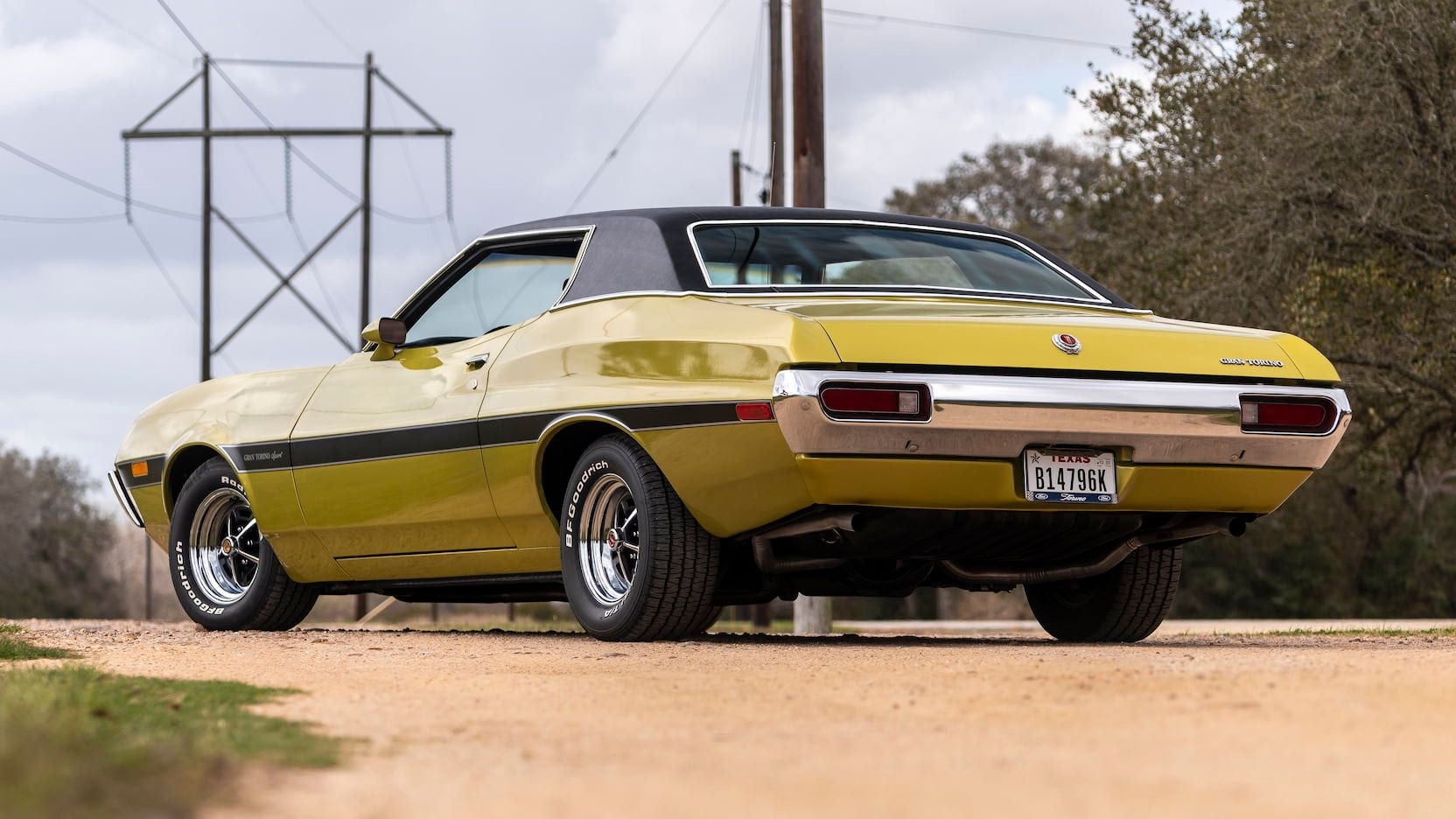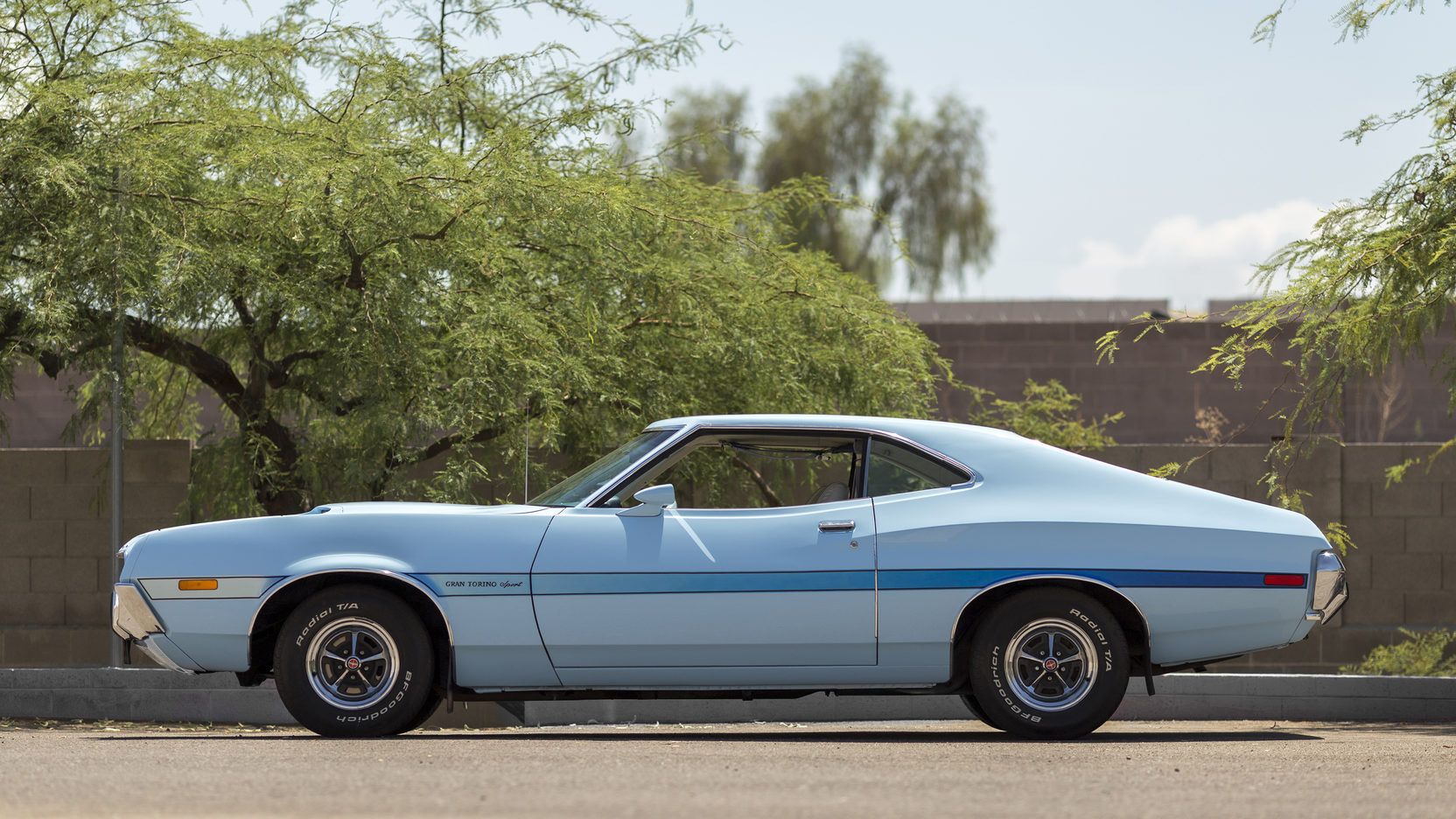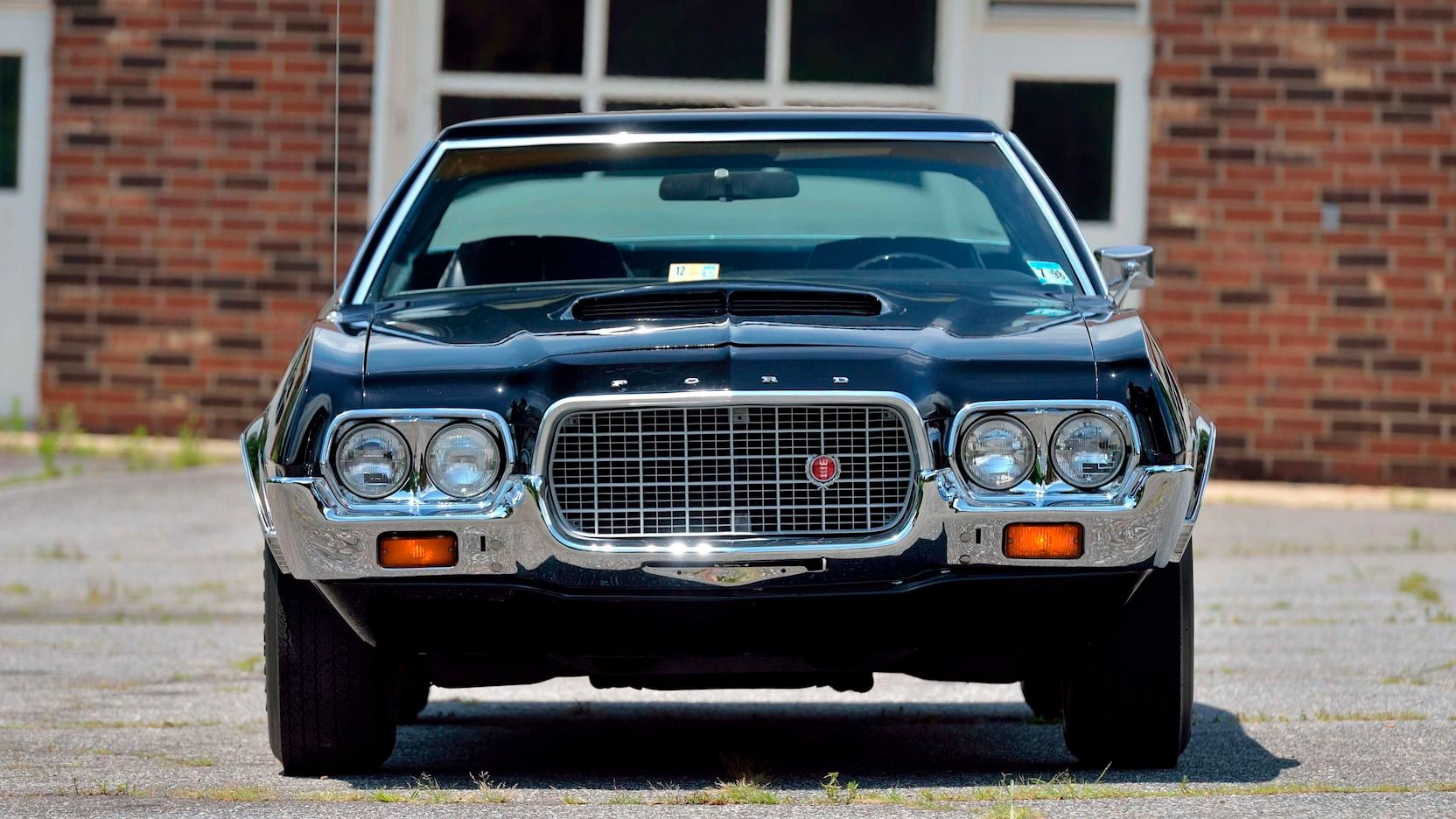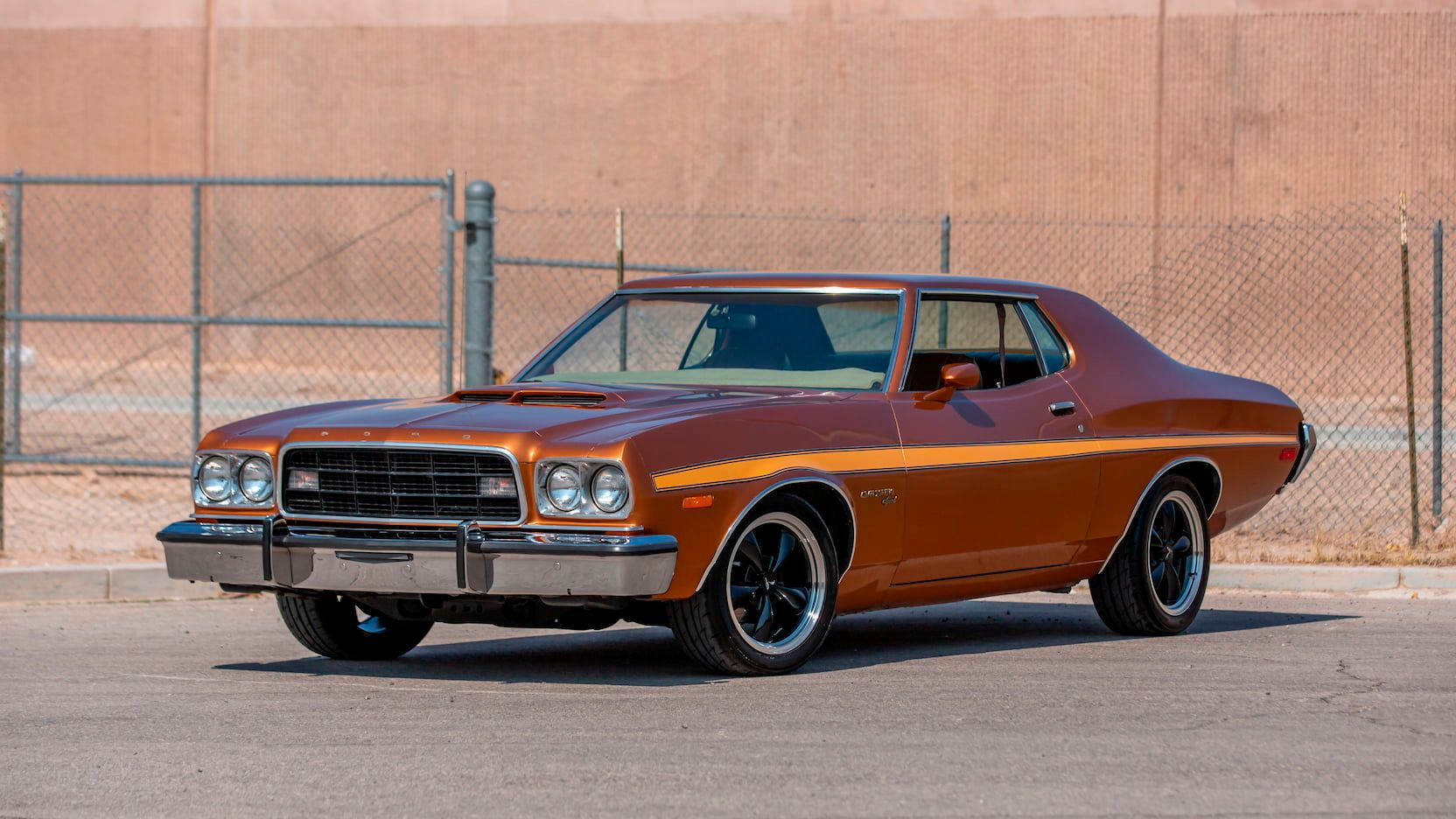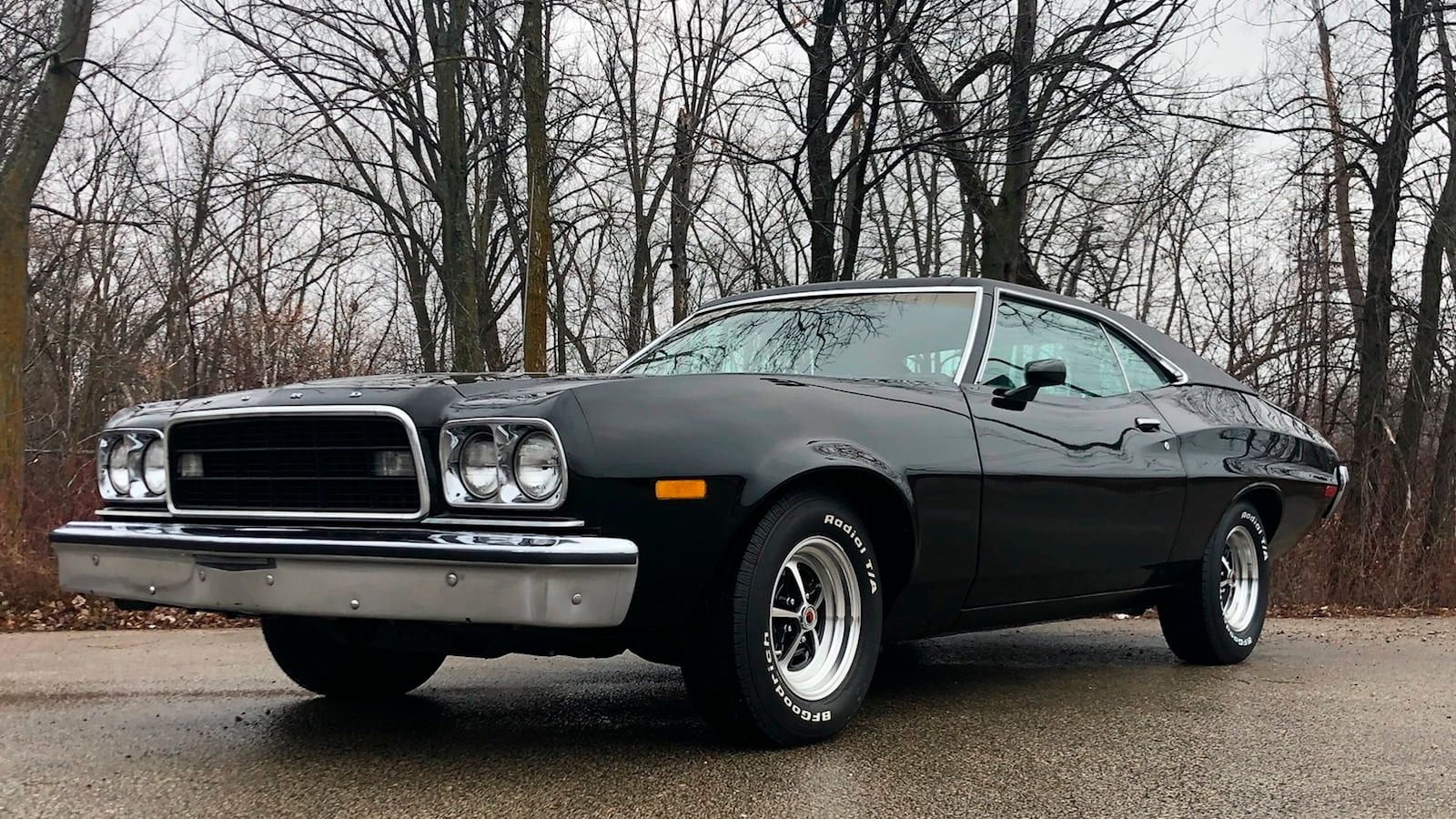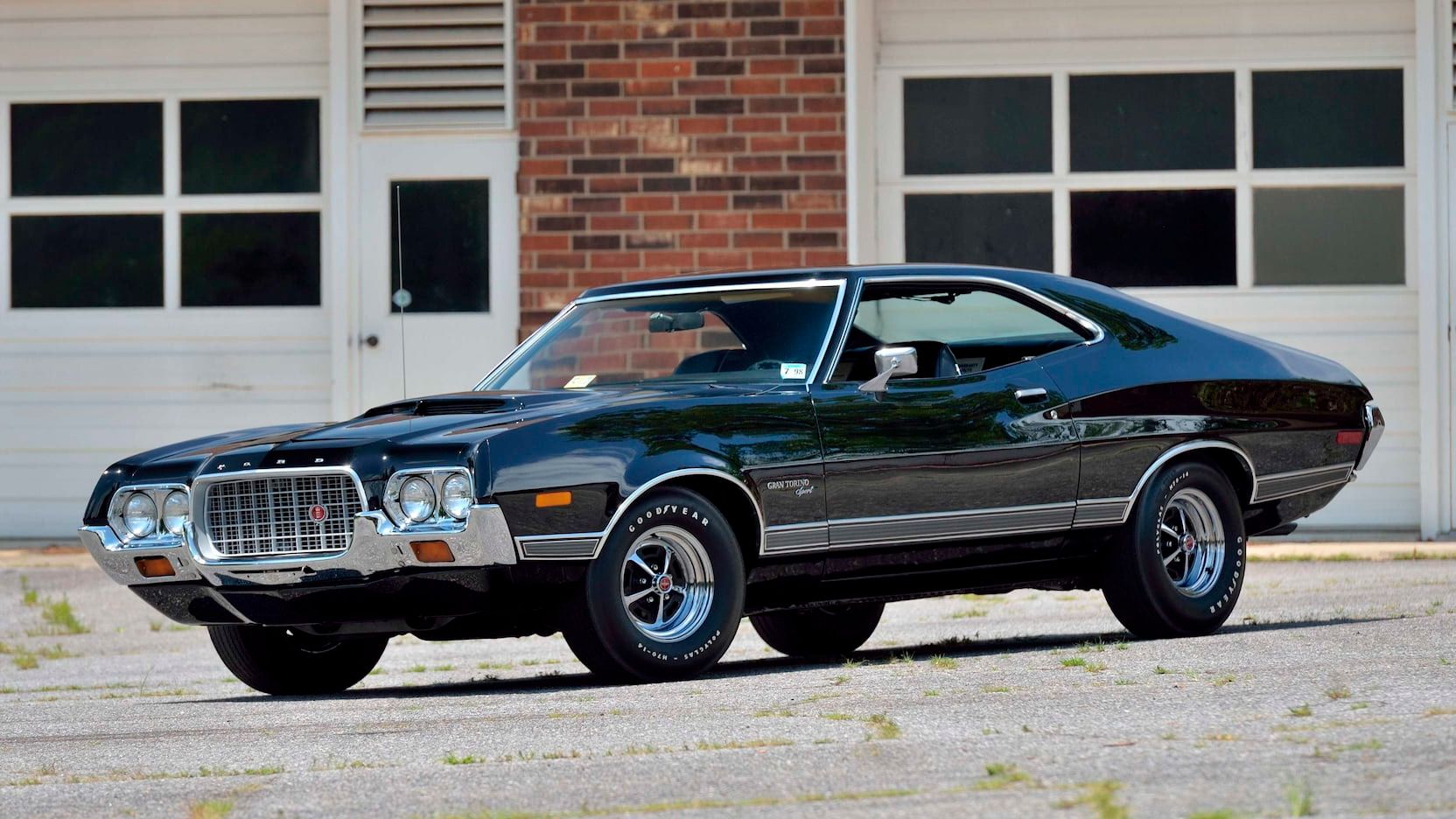The Ford Gran Torino has been overshadowed for decades, but that could make it a good option if you’re looking for some cheap muscle.
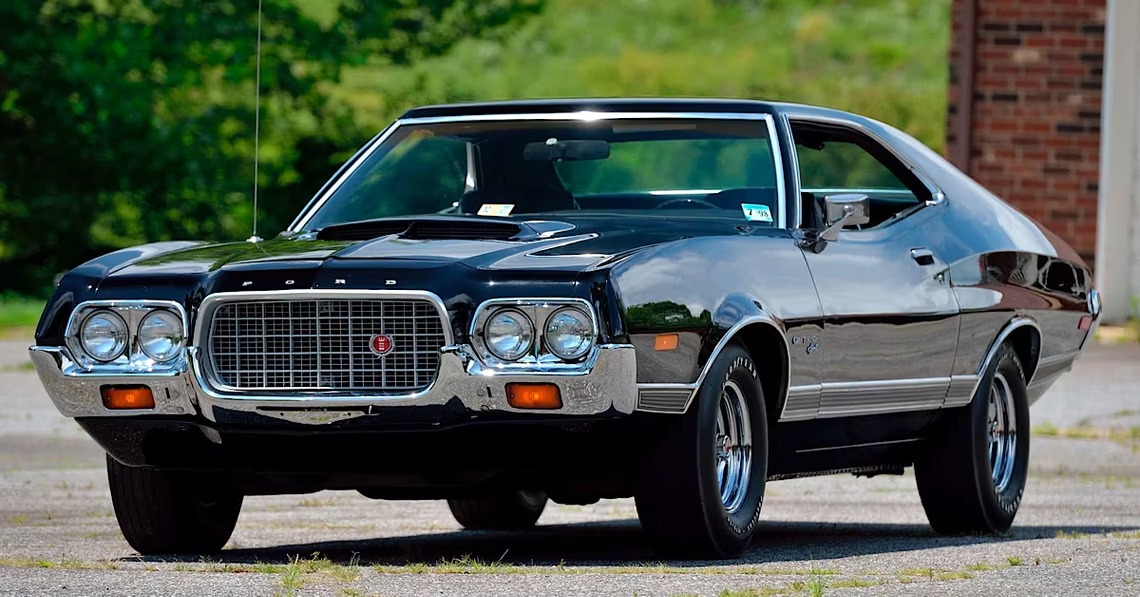
Some may consider the Ford Gran Torino to be a muscle car, although others scoff at such a notion. They won’t accept that any V8-powered, American car produced from 1972 until the 1990s should be called a muscled car. The ’90s was when horsepower levels finally began to revamp themselves after years of strangulation brought forth by government bureaucracy.
As a result of that same, government meddling, the Ford Gran Torino became instantly hindered upon its release in 1972, seemingly doomed to a life of slowness and distasteful design cues. Nonetheless, there is still something undeniably cool about the Ford Gran Torino, and these classic cars can still play host to some serious mods that can raise their power outputs up into the stratosphere. Today, we look at five reasons why the Ford Gran Torino was an awesome, 1970s muscle car, as well as five reasons why it wasn’t.
10 Why It’s Awesome: The Ford Gran Torino Is Cheap For A Classic Muscle Car
In general, the Ford Gran Torino can be considered a bargain when compared to countless other muscle cars of the 1970s. According to Hagerty’s Valuation Guide, a 1972 Ford Gran Torino Sport is valued at $11,800 in good condition, and that includes the 4bbl, 429-cid V8.
Sadly, these engines only produced 205hp, but are still ripe for improvement and the cars themselves offer a traditional, 1970s muscle car package for a fraction of what certain competitors are currently valued at.
9 Not Awesome: The Ford Gran Torino Didn’t Make Much Power
As mentioned, the big-block, 429-cid variants of the Ford Gran Torino only produced 205hp in 1972.
Surprisingly, the smaller, 351-cid Cobra Jet engines pushed this figure up to a respectable 248hp for that same model year, although this figure is still about 200 ponies less than some of the tenacious muscle cars of only a few years prior.
Worse still is the fact that these engines would only continue to produce less and less power as the Gran Torino carried onward throughout the 1970s, as government regulations would ultimately kill off the American muscle car in its purest form.
8 Why It’s Awesome: The Ford Gran Torino Has A Lot Of Common Parts
Due to Ford’s penchant for badge engineering, several components of the Gran Torino can be found in a variety of other Ford, Mercury, and even Lincoln models of certain vintage.
With the cost of NOS and reproduction parts, it’s still possible to find the bits needed to complete a Gran Torino project, but as with any classic car that’s over 50 years old, challenges are sure to emerge at some point.
7 Not Awesome: Certain Ford Gran Torino Parts May Prove Hard To Find
Even with a wider availability of parts than some of the more obscure muscle cars, the Ford Gran Torino can still fall victim to accessibility.
Like any old car, there are certainly going to be crucial components that are inherently specific to the year/make/model in question, and not all of which are reproduced by companies like Year One, as a strong portion of these reproduction companies tend to favor the Mustang. As a result, prospective owners could find themselves digging deep to find certain pieces of the puzzle. Still, with Ford’s strong support network, finding that crucial part will likely be far from impossible.
6 Why It’s Awesome: The Ford Gran Torino Is A Great Platform To Modify
As mentioned, the Ford Gran Torino suffers from a severe lack of horsepower, enough so that even certain Honda Civics manage to churn out more ponies than a 1972 Ford Gran Torino Cobra Jet.
Fear not, as the massive expansive of Gran Torino’s engine bay can easily accommodate a wide range of engine-swap applications. These cars were built from the factory to house a hulking 429-cid unit, leaving plenty of room for an LS or Coyote swap.
5 Not Awesome: Be Careful When Buying A Modified Ford Gran Torino
The last Ford Gran Torino rolled off the assembly line in 1976, so simply referring to these as “used cars” is a drastic understatement.
As these cars tend to attract enthusiasts, combined with the fact that the Gran Torino offered little performance when new, it’s become obvious that several of these cars have been drastically modified over the decades, over and over again. Anyone searching for a Ford Gran Torino should make a crucial note to discover exactly what has been changed, as well as how it was changed. Not everyone knows how to turn a wrench, but many believe they do. As a result, a prospective buyer could be walking into something dangerous without even realizing it.
4 Why It’s Awesome: The Ford Gran Torino Is A Great Alternative To The Mustang
As far as vintage cars go, the Ford Mustang has become something of a generic classic, and also seen seemingly everywhere for nearly 60 years now.
By contrast, the Ford Gran Torino offers potential buyers the ability to stand out from the endless herd of stallions present at virtually any car meet or show, which ultimately seems to give these cars far more character.
3 Not Awesome: There Are Better Alternatives For Performance-Minded Drivers
For those seeking out a car solely for its performance, the Ford Gran Torino might not necessarily be the right choice.
Due to the drastically lower power outputs in comparison with slightly older muscle cars, acceleration won’t be anything terribly impressive for a stock version, even for the Cobra Jet and 429-equipped versions. With a hefty heavy curb weight on top of which, handling and braking fall victim, preventing the Gran Torino from properly stretching its legs.
2 Why It’s Awesome: The Ford Gran Torino Offers Big-Block Power
The Ford Gran Torino, at least in its earlier versions, still found itself host to the big-block 429-cid V8.
Although these were nowhere near as powerful as their 1960s counterparts, a seasoned enthusiast with the right skills and budget can easily transform one of these engines into a fiery monster, and for far less money spent than performing the same degree of work upon various alternatives.
1 Not Awesome: Malaise Era Styling
Unfortunately, the Ford Gran Torino was a byproduct of the dreaded Malaise Era; the dark, dreary period of the 1970s and early 1980s, when performance was practically nonexistent and styling choices became questionable.
As a result, the Ford Gran Torino lacks a lot of the flair and clean lines seen throughout its 1960s incarnations, as was the same fate for many American cars of this period. Still, these things are just one of the many factors that help keep the prices down, making it even easier for enthusiasts to get their hands on an authentic, American muscle car.
Sources: Ford Motor Company, Mecum, Hagerty, Hemmings



